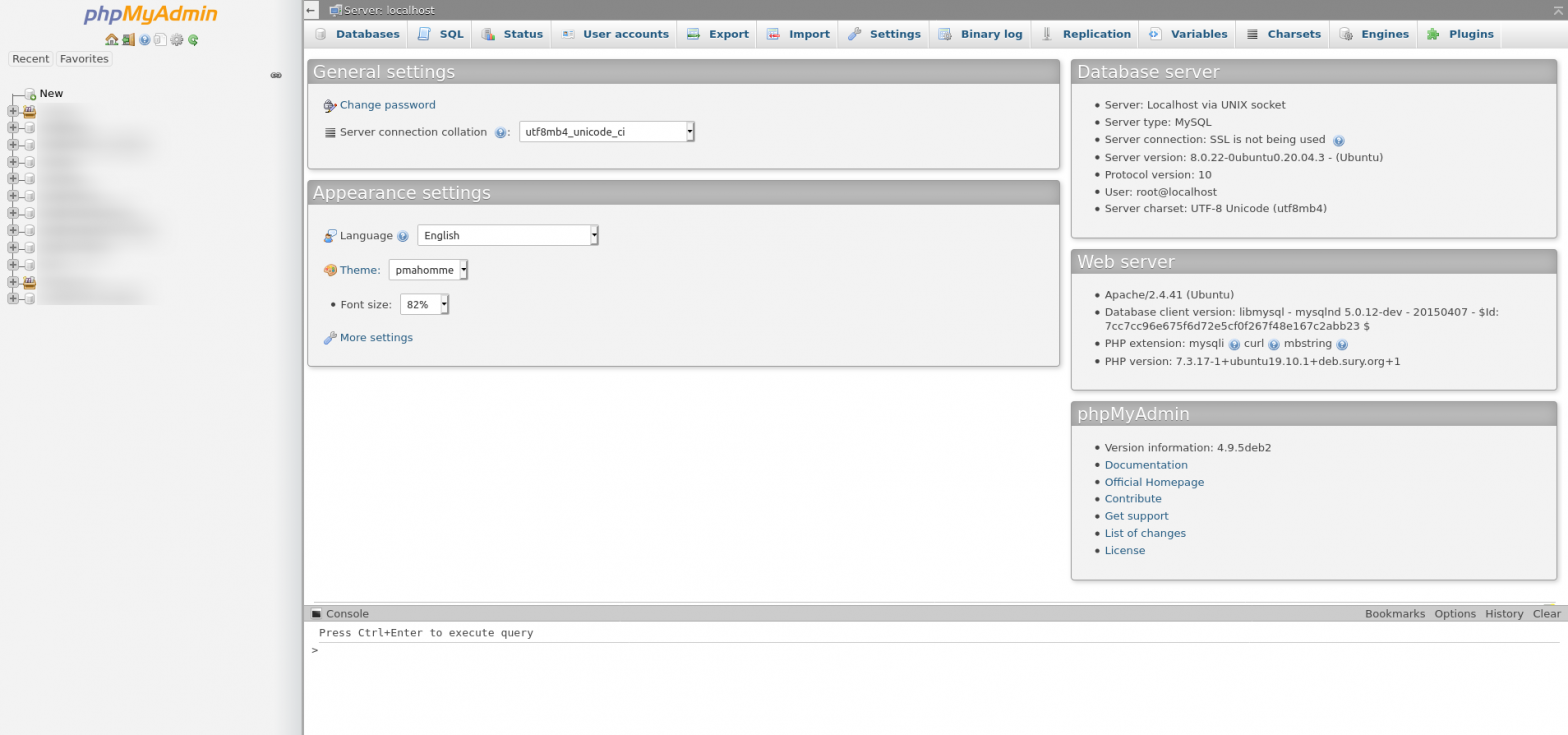Sometime in 2019, I was sitting at a conference, when we could still do such things, listening to the first speaker of the day, while getting some Castos support work wrapped up. Someone behind me tapped me on the shoulder, pointed, and laughed saying “You should be using the command line!” It took me a moment to realise what he was mocking me for. I had phpMyAdmin open.
phpMyAdmin is (from their website) “a free software tool written in PHP, intended to handle the administration of MySQL over the Web.” I honestly don’t recall when I first started using it to manage my MySQL databases, but I’m pretty sure it came installed with Wampserver, which was my first PHP local development environment. 16 years later, and I still use phpMyAdmin to this day, both in my local development environment, and, in some cases, to access production databases.
Authors note: if you choose to use phpMyAdmin in a production environment, make sure you secure it properly. This article isn’t about that, but there is plenty of information on how to secure your phpMyAdmin install in the official documentation.
Security concerns around using PHP software to access your production databases aside, I’ve tried all sorts of applications as replacements for phpMyAdmin, from MySQL Workbench to Navicat, and even the command line, and I still come back to phpMyAdmin like an old, comfortable pair of shoes.
1. It’s Free and Open Source
As someone who supports paying for premium products, the fact that it has remained free and open source for 21 years is quite an amazing feat. It’s probably the longest-running piece of open source PHP software still relevant today.
2. It’s easy to install
It can be installed on any web server that supports PHP, which means probably either Apache or Nginx, with one single command. As it’s a PHP web app with an HTML front end, there are no real requirements other than what you might already have for a regular PHP web app.
3. It’s light weight
It’s a PHP app, so it doesn’t take up any extra memory when it’s being used, other than what it needs to perform the next request. The download is only 13mb in size, and that includes all the different language files.
4. The search functionality is pretty cool
This is about my favourite feature of phpMyAdmin, the fact that it has a search form for each table. Using the form, you can search for any data, across any of the fields, in a table, using any combination of operators, including LIKE queries, in a matter of seconds. In my opinion, it’s the fastest way to lookup data when you need to.
I do use a GUI like MySQLWorkbench, mainly when I need to prepare complex SQL queries or export larger sets of specific data because the PHP memory limits sometimes mean exports via PHPMyAdmin can’t cut it, but for the most straightforward tasks, like data lookups, I’ve not found anything on Linux that beats PHPMyAdmin.

Leave a Reply